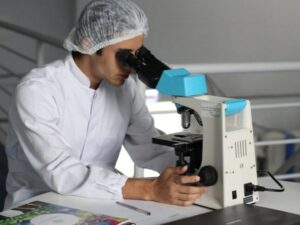Why Primary Care Physicians Are Key to Early Diagnosis

In the complex world of healthcare, early detection of health issues can mean greater chances of receiving good treatment. Treating patients early and noticing anything worrisome are the primary tasks of primary care physicians. There are special qualities that give these experts their unique position in this area. ?
Their continuous relationship with patients creates a baseline of knowledge and detects different changes occurring in their health that other providers may overlook. Now that healthcare has become extremely fragmented, it is even more important to know your primary doctor’s role in figuring out your illness.
Evolving Landscape of Primary Health Care Services
In the past decade, primary healthcare has matured, concentrating on finding health problems early so they can be treated efficiently. These new developments have led to a better quality of care for senior citizens due to their frequent health complications.
Modern Approaches to Preventive Healthcare for Seniors
Today’s ways of caring for seniors include specific screening tests that are set up for people aging healthily. These investigations are different from standard yearly check-ups because they focus exactly on health threats that are connected to your age.
Nowadays, technology is a key part of the monitoring process in primary care. Patient monitoring devices now allow primary care physicians near me to track vital signs and check their daily movements with the help of these devices. Because of this data, risky trends can be spotted early and handled before they get out of control.
Value-Based Care Models Enhancing Early Detection
The healthcare system continues to shift from volume-based to value-based payment structures. Because of shifts in payment, there has been a change in both delivery and reimbursement of primary health services.
Under value-based models, doctors are rewarded for making sure patients stay healthy rather than just treating their diseases. Because of this, it would be very beneficial for health care companies to invest in thorough screening and early diagnosis tools.
Nowadays, people are working in teams, including nurses, pharmacists, social workers, and physicians, to help find occurrences sooner. Using algorithms, the doctors are now able to identify patients who require extra monitoring due to their high risk.
This targeted approach ensures resources are directed. We make certain that our funds reach the people who can benefit the most. In the changing world of medicine payments, picking up problems early is good for both patients and doctors.
Even though the models affect the healthcare system as a whole, their most important impact is on the regular, close relationships between doctors and their patients.

Source: Canva
Primary Care Advantage
What is most important in primary care during diagnosis is the continuous rapport between the doctor and the patient. This type of care brings exclusive benefits that you won’t find in fragmented places like emergency care or urgent care.
Building Long-Term Patient Relationships
Familiarity with your patient’s habits is often the main support for quick diagnosis. To monitor their patients’ health, primary care physicians get to know when little details might mean something more serious.
Noticing fatigue and higher blood pressure only becomes possible for a healthcare provider if he or she knows your usual condition. Knowing these conditions so well gives physicians a great edge in diagnosis.
If a patient trusts their healthcare provider, they will probably bring up early symptoms that they might not mention if they do not trust them as much. When you have faith in your doctor, it becomes easier to mention the little discomfort you feel so that they can investigate it.
Comprehensive Health Assessments as Detection Tools
These days, annual wellness checks have become more advanced, offering much more than basic health assessments did earlier.
Nowadays, physicians in primary care assess the major risks to patients’ hearts and brains, as well as their cognitive functions. Such assessments allow experts to detect mild changes in a person’s health that might not be noticed before the condition worsens.
With the use of both insights from relation with doctors and structured assessment, the first detection is better than what specialty care can provide alone.
Affordable Senior Healthcare
For numerous seniors, problems with money make them delay getting medical care until their issues become very severe. If these barriers are handled, early diagnostics and prevention strategies can work better.
Financial Obstacles to Primary Care Access
Innovative, affordable senior healthcare programs are working to address these gaps. Medicare Advantage plans increasingly offer enhanced preventive benefits with reduced or eliminated copays for screening services.
For many seniors who require frequent medical attention, insurance gaps form a big challenge. Paying out-of-pocket prices might cause people to skip regular check-ups, where diseases are found early.
Geographic and Transportation Solutions
Not being able to get out due to barriers is as important for some seniors as not having enough money. Mobile clinics give primary health care to people who do not have easy access to regular health services. They help provide preventive tests and diagnostics to places that do not have permanent healthcare centers.
Visiting the doctor in person or virtually in one system gives patients many options. Usually, the beginning steps can be done remotely, and meeting up in person is done later for a physical examination if it is needed.
Associations with local senior centers, churches, and people who drive help us handle the difficulties related to organizing transportation. Thanks to collaborative projects, seniors can get the health care they require whenever they need it.
Chronic Condition Management Begins with Early Detection
The earlier a long-term health illness is found, the better its management becomes. Early spotting of a disease allows you to stop it before serious harm is done.
Primary Care Approaches to Monitoring Pre-Chronic Conditions
Currently, many primary care doctors concentrate on diagnosing diseases early, such as pre-diabetes and pre-hypertension, that may lead to a chronic illness.
Blood pressure is going up, though it has not reached hypertension levels yet. Your doctor can start making changes to your lifestyle and observations before requiring you to use medication.
Strategies for heart monitoring have been improved for critically sick people. When family health histories involve certain diseases, people are given distinctive screening plans and judged for risks.
Coordinated Care Systems that Enhance Detection
Nowadays, people with chronic health problems are treated using methods that connect healthcare settings and specialists. The main job of primary care is to coordinate with specialists whenever new results are found. Because of this process, patients get follow-up services when needed and without wasting valuable time.
This technology has boosted pattern recognition in the medical world. Recent systems can notice minor changes in lab tests, patient vitals, and complaints that could lead to conditions. In collaborative care, different specialists share their expertise for tough cases. Common conferences between the primary healthcare provider and other specialists help improve the right diagnosis.
| Aspect of Care | Modern Primary Care | Traditional Primary Care |
| Visit Frequency | Regular scheduled monitoring | Annual or when sick |
| Technology Use | Remote monitoring between visits | Limited to office visits |
| Screening Focus | Personalized risk assessment | Standard age-based tests |
| Team Integration | Multidisciplinary team approach | Physician-centered |
| Data Analysis | AI-assisted pattern recognition | Manual chart review |
| Follow-up | Proactive outreach for concerning findings | Patient-initiated |
| Payment Model | Value-based care incentivizing prevention | Fee-for-service |
Future of Early Diagnosis in Primary Care
Because of emerging technology and studies, the ways in which primary care detects health issues have improved greatly.
Emerging Technologies Enhancing Diagnostic Capabilities
AI technology is starting to support doctors when they diagnose patients in primary care. They assist in discovering minor clues in patients’ symptoms, test outcomes, and readings.
Because of wearable technology, primary care physicians can now follow their patients continuously. By tracking things such as how the heart beats and blood sugar levels, devices help find problems when you are not at the doctor’s office.
Smart technologies are improving in this field, and now, toilet waste, body weight, and sleep patterns are being studied without manual efforts. These details make the diagnostic algorithms more advanced.
Research Advancements Changing Primary Care Protocols
Scientists are quickly uncovering new ways to find diseases early on. Just one example of research helping early detection is blood tests that identify a range of cancers long before they show up.
More primary care doctors are including genetic screening, allowing them to spot risk factors inherited from parents that should be closely monitored or handled with preventive actions.
Using artificial intelligence, predictive analytics is now more accurate in forecasting health problems. With these measures, doctors can focus their energy on patients for whom more attention is needed. It seems that early diagnosis in primary care will become more personal, active, and strong in the future.
The Evolving Role of Primary Care
The importance of primary care in early diagnosis keeps growing as healthcare services meet new problems. Identifying health issues early can be made possible by going to a primary care physician.
Visiting your main doctor on a regular basis is one of the best things you can do for your health. As we keep meeting, these relationships improve and make our healthcare partnership more valuable every time.
FAQs
What is the importance of early medical care?
Receiving medical care at the beginning can help detect health concerns early, enable treatment as soon as possible, save money, and improve a person’s overall health.
What is the main role of primary care?
The main function of primary care is to provide access to healthcare, give it throughout life, and prevent, find early, and deal with chronic illnesses that a person may encounter over time.
Why is primary care important?
Regular healthcare through family practice reduces the risk of severe health issues, helps cure them early, and lets people avoid extensive medical care.






